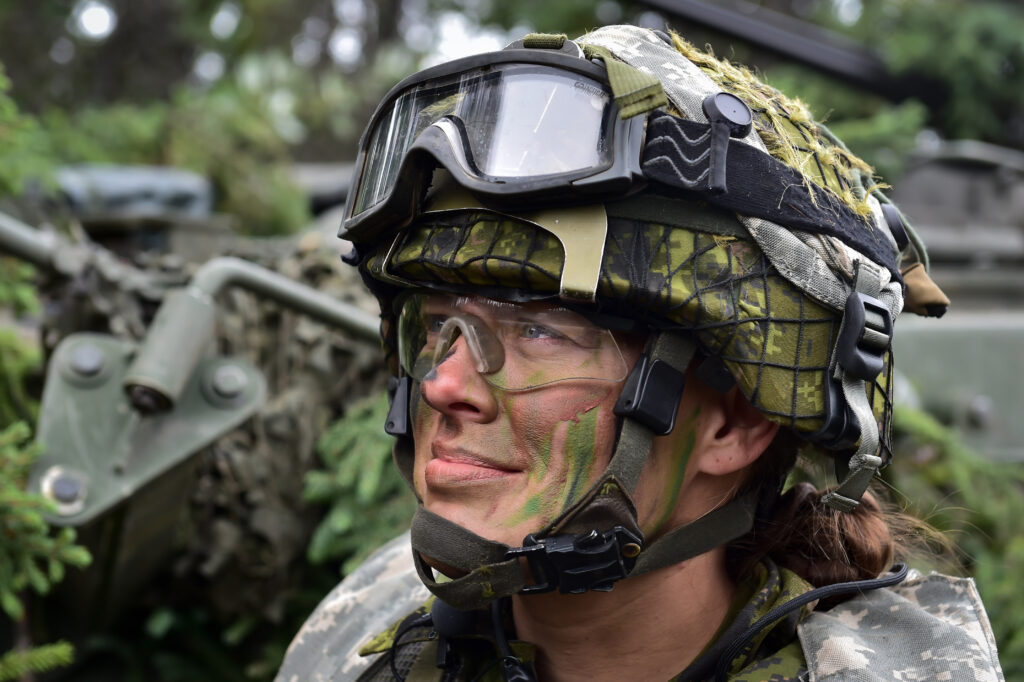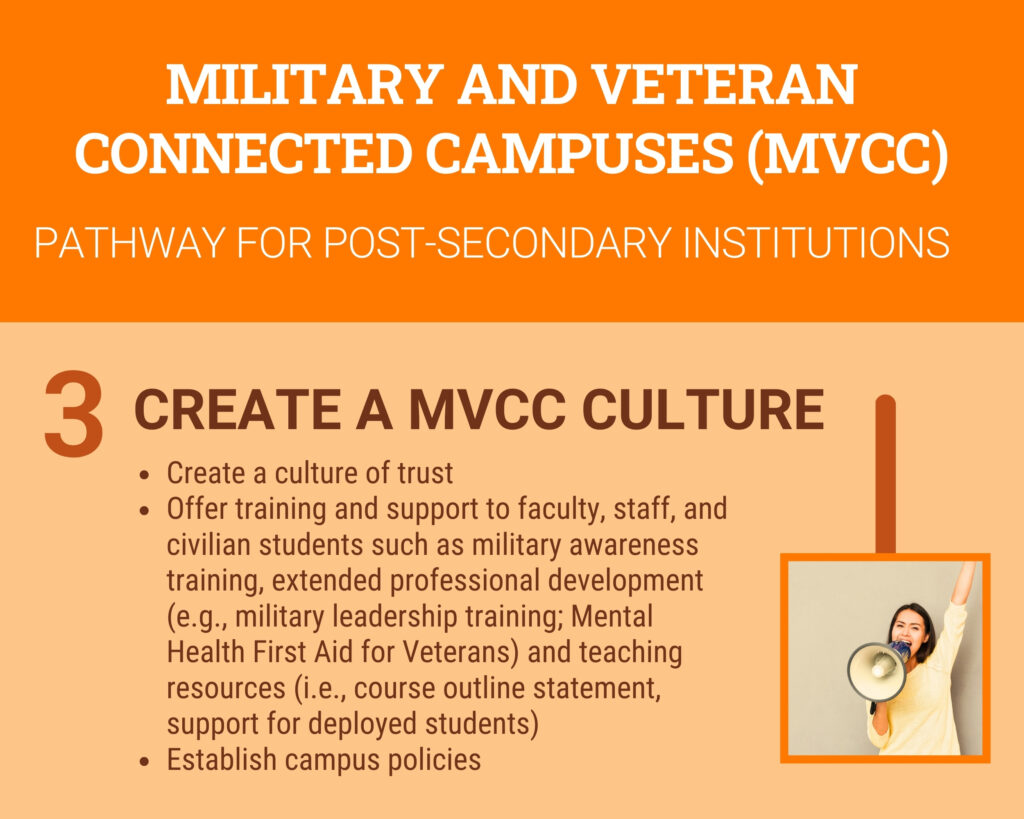

Watch: Cultivate awareness

Student deployment support

Military and veteran student orientation support

Create a culture of trust

Offer military awareness training to faculty, staff and civilian
Training
- Mental Health First Aid (MHFA) Veteran Community Course – MHFA for the Veteran Community is tailored to address the needs of Veterans and the people who care for, and about, them. Its goal is to improve our collective capacity to recognize and assist with addictions, as well as mental health problems and illnesses, by supporting Veterans in the application of evidence-based practices in service delivery, the workplace and personal interactions.
Consider offering a new student orientation specific to military and Veteran students.
Supporting military and veteran students – Culture awareness companion
Additional resources and references
Military culture awareness
Resources
- CAF 101 for civilians
- Reports and publications
- Defence Policies and Strategies
- Links to resources from Veterans Affairs Canada
Online learning library
Psych/Armor (U.S. resources):
- Developing a Military Awareness Program on Campus
- The Basics of Military Culture
- 15 Things Veterans Want You to Know
- 15 Things Military Caregivers Want You To Know
- 15 Things Military and Veteran Kids Want You to Know
- Women Who Serve
- Women Veterans Series
- Goodbye to Going It Alone
- Myths and Facts About Wounded Warriors
- The Myths and Facts of Military Leaders
Teaching resources for staff and faculty
Research and evaluation
Resources
Online learning library
Psych/Armor (U.S. resources):
- Models for Shared Learning
- Developing a Data Strategy
- Sustaining Momentum
- Documenting Best Practices
References
- Bradshaw, C., Atkinson, S., & Doody, O. (2017). Employing a qualitative description approach in health care research. Global Qualitative Nursing Research, 4, 1-8. https://doi.org/10.1177/2333393617742282
- Crabtree, B., Miller, W. (1999). A template approach to text analysis: Developing and using codebooks. In Crabtree, B., Miller, W. (Eds.), Doing qualitative research (pp. 163–177). SAGE.
- Creswell, J. W., & Poth, C. N. (2018). Qualitative inquiry and research design: Choosing among five approaches. SAGE.
- Law, M., Cooper, B., Strong, S., Stewart, D., Rigby, P., & Letts, L. (1996). The person-environment-occupation model: A transactive approach to occupational performance. Canadian Journal of Occupational Therapy, 63(1), 9–23. https://doi.org/10.1177/000841749606300103
- Marton, C. (2001). Environmental scan on women’s health information resources in Ontario, Canada. Information Research, 7(1), 7-1.
- Metz, A., & Louison, L. (2018). The hexagon tool: Exploring context. National Implementation Research Network, Frank Porter Graham Child Development Institute, University of North Carolina at Chapel Hill.
- Patton, M. Q. (2002). Qualitative research and evaluation methods. London: Sage.
- Sandelowski, M. (2010). What’s in a name? Qualitative description revisited. Research in Nursing & Health, 33(1), 77-84. https://doi.org/10.1002/nur.20362
- Shahid, M., & Turin, T. C. (2018). Conducting comprehensive environmental scans in health research: A process for assessing the subject matter landscape. Journal of Biomedical Analytics, 1(2), 71–80. https://doi.org/10.30577/jba.2018.v1n2.13
- Willis, D. G., Sullivan-Bolyai, S., Knafl, K., & Cohen, M. Z. (2016). Distinguishing features and similarities between descriptive phenomenological and qualitative description research. Western Journal of Nursing Research, 38(9), 1185-1204. https://doi.org/10.1177/0193945916645499
